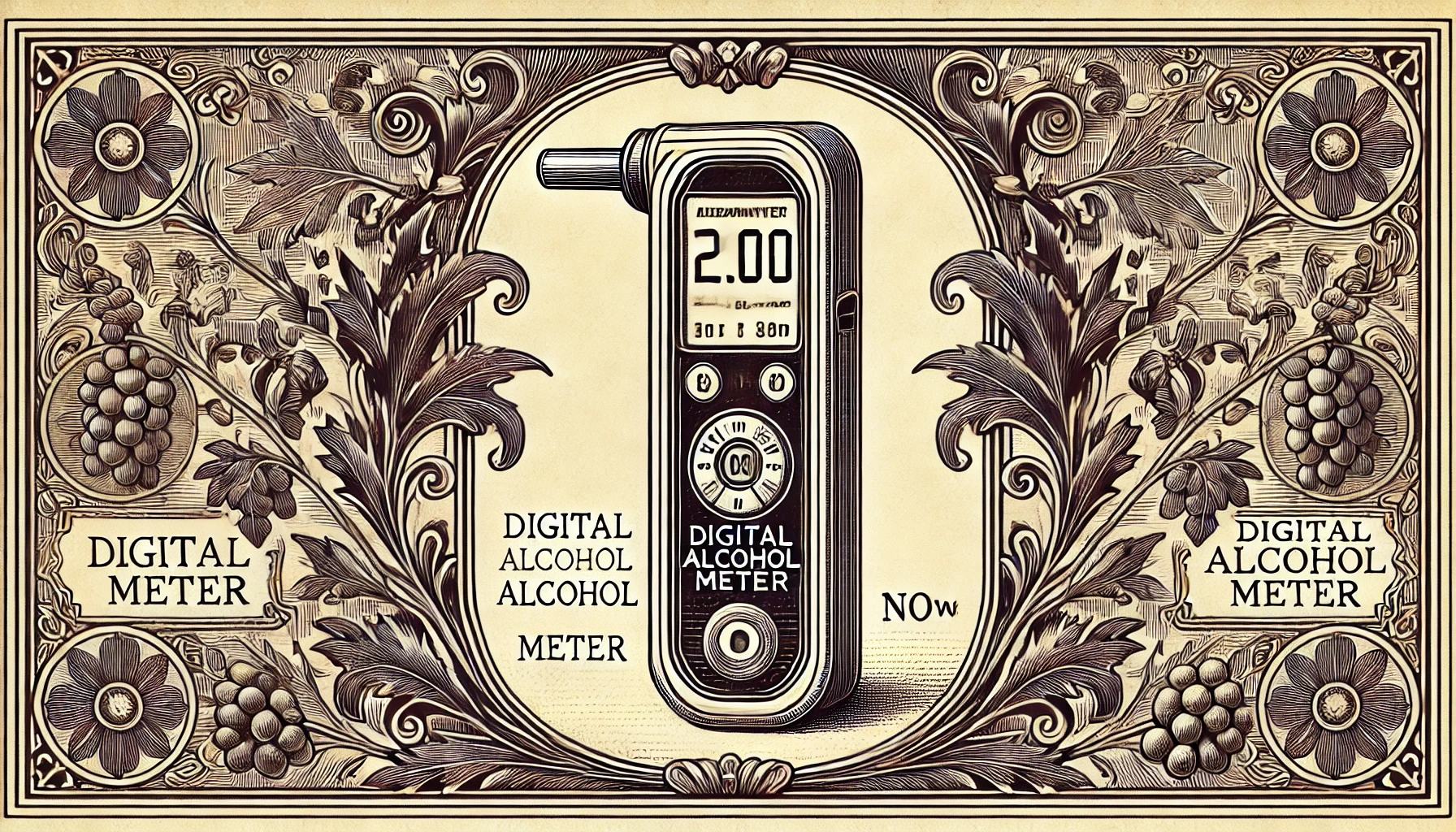
Technology is changing the way winemakers, brewers, and distillers measure alcohol. Gone are the days of relying solely on hydrometers or refractometers. Now, a digital alcohol meter—also known as a digital analyzer—provide quick, accurate, and hassle-free alcohol measurements.
But what exactly are these devices? How do they work, and why should winemakers consider using them? This article explores everything you need to know about alcohol meters, from their benefits to how they compare with traditional measuring tools.
What Is a Digital Alcohol Meter?
A digital alcohol meter is an electronic device designed to measure the alcohol content of a liquid. Unlike hydrometers or refractometers, which rely on gravity or light refraction, digital analyzers use advanced sensors and electronic calculations to determine the exact alcohol percentage.
These meters are commonly used in:
- Winemaking
- Brewing (beer and cider)
- Distillation
- Quality control for commercial beverages
Modern alcohol meters provide highly accurate readings in a matter of seconds, making them a preferred tool for both professionals and hobbyists.
How Does a Digital Alcohol Meter Work?
Digital alcohol meters operate using one of the following technologies:
- Density Measurement: The device measures the liquid’s density, much like a traditional hydrometer, but uses electronic sensors for greater accuracy.
- Infrared Spectroscopy: Some advanced analyzers use light absorption to determine alcohol concentration without requiring complex sample preparation.
- Oscillating U-Tube Technology: This method detects how a liquid’s density changes with alcohol concentration, providing a precise reading without temperature interference.
Most digital analyzers work with small sample sizes, reducing waste and making the process more efficient.
Key Benefits
Why should you consider using a digital alcohol meter instead of traditional methods? Here are some of the biggest advantages:
- Speed: Most devices provide results within seconds.
- High Accuracy: Unlike manual tools, digital meters eliminate user errors caused by incorrect readings.
- Easy to Use: No complicated calculations or conversions needed.
- Requires Less Sample Liquid: Many models only need a few drops to deliver results.
- No Need for Calibration Charts: Digital devices adjust automatically, reducing extra steps.
- Works Across Multiple Beverages: Whether it’s wine, beer, spirits, or kombucha, digital analyzers adapt to different liquid types.
Comparing Digital Alcohol Meters with Traditional Tools
To understand the advantages of digital analyzers, let’s compare them with hydrometers and refractometers in the table below:
| Feature | Digital Alcohol Meter | Hydrometer | Refractometer |
|---|---|---|---|
| Accuracy | High (±0.1%) | Moderate (±0.5%) | Moderate (varies) |
| Speed | Instant results | Requires time | Quick, but less precise |
| Sample Size | Very small (a few drops) | Large (test tube full) | Small (a few drops) |
| Ease of Use | Very easy | Requires manual reading | Requires manual correction |
| Versatility | Works for all beverages | Best for beer/wine | Best for initial fermentation |
| Calibration Needed? | No (self-calibrating) | Yes | Sometimes |
From the table, it’s clear that digital alcohol meters offer a level of convenience and precision that traditional tools cannot match.
How to Use a Digital Alcohol Meter
Using a digital analyzer is straightforward. Here’s a step-by-step guide:
- Prepare the Sample – Ensure the liquid is free from bubbles and solids.
- Turn on the Device – Most meters have a simple start button.
- Insert or Load the Sample – Some models require you to dip the probe into the liquid, while others need a small sample in a chamber.
- Read the Results – Within seconds, the device will display the alcohol percentage.
- Clean the Device – Rinse it with distilled water after use to maintain accuracy.
Popular Digital Alcohol Meter Models
Several brands manufacture high-quality digital analyzers for wine and spirits. Here are some of the most trusted options:
- Anton Paar Alcolyzer – Known for extreme accuracy in wine and spirits testing.
- Vinmetrica ABV – A great choice for home winemakers.
- Dujardin-Salleron Digital Meter – A professional-grade option used in wineries.
- AlcoDigital AlcoScan – Commonly used for alcohol verification in commercial settings.
Each model comes with different features, so choosing one depends on your specific needs and budget.
Limitations and Considerations
While digital alcohol meters are highly efficient, they do have some limitations:
- Higher Cost: They are more expensive than hydrometers or refractometers.
- Battery or Power Requirement: Unlike traditional tools, they need a power source.
- Maintenance Needed: Some models require regular calibration or cleaning to maintain accuracy.
- Cannot Measure Sugar Levels: Unlike hydrometers, which track fermentation progress, digital meters only measure alcohol content.
Should You Invest in a Digital Alcohol Meter?
If you’re serious about winemaking, brewing, or distilling, a digital alcohol meter is worth considering. It eliminates guesswork, reduces errors, and provides instant results. Although the initial cost is higher, the time and accuracy benefits make it a worthwhile investment.
For casual home winemakers, a hydrometer or refractometer may be sufficient. But for professionals or those who demand precision, digital analyzers are the future of alcohol measurement.
Final Thoughts
Digital alcohol meters bring convenience and precision to alcohol measurement. Whether you’re a winemaker checking ABV levels or a brewery ensuring quality control, these devices simplify the process. With their ease of use, speed, and reliability, digital analyzers are becoming an essential tool in modern alcohol production.
When choosing the right model, consider your budget, accuracy needs, and the types of beverages you work with. In the end, a digital alcohol meter isn’t just a tool—it’s an investment in better, more consistent results.
Curious about more wine terms and insights? Visit our Wine Wiki section and explore the basic wine terms for expert definitions and tips!